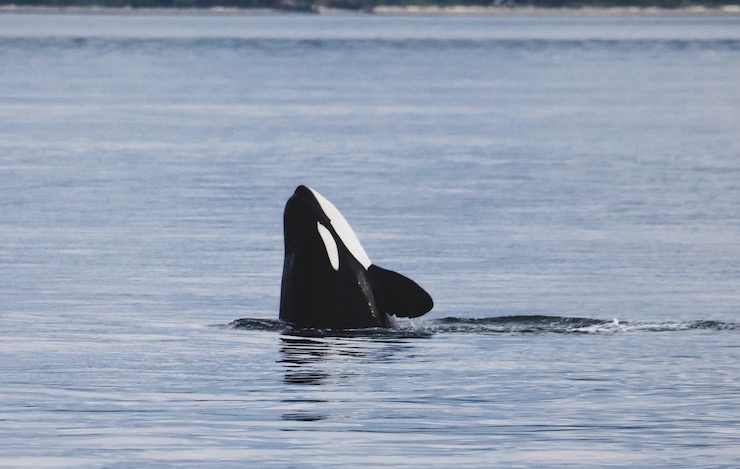
Drones have a remarkable ability to capture wildlife “in action.” Hovering far above mammals and fish, drones can record their movements quietly, without being noticed. Yet, equipped with their high-powered zoom cameras and thermal imaging, drones can also get a close-up view of aquatic animals, identifying and even tracking individual members of a species when needed. Drones can greatly advance our understanding of animal mating, reproductive and migratory patterns and enhance our ongoing conservation efforts. For this reason, drones are fast becoming an important adjunct to existing wildlife observation systems.
But drones can also break new ground by filming patterns in animal life that were previously unknown or under-appreciated. This was the case last year when South African researchers captured the efforts of two orcas, or “killer whales” – known by their aliases, Port and Starboard – to attack a school of Great White sharks. The team’s drone captured the defensive measures taken by the sharks as well as the ingenious tactics employed by the two orcas to pursue, attack and kill their prey. The research revealed that orcas deliberately target the Great White’s fatty liver – a delicacy of sorts.
Earlier this month, a recreational drone flier in northern California, Evan Brodsky, captured a slightly different scenario – a pod of 30 orcas attacking two large adult Grey Whales in Monterey Bay. The attack was unusual because orcas are known to attack vulnerable grey whale calves but not their larger, more imposing parents. But this being April, early in the mating season, no calves were present. The two whale adults, while severely outnumbered, were able to bond together and fend off the orcas that persisted in attacking them – to no avail – for a period of five hours. Brody filmed the entire encounter with his drone and posted a video excerpt on YouTube.
Not all drone footage of fish and mammal movements depicts these sudden predatory encounters. Researchers have deployed drones to track long-term migratory patterns among sharks, sea turtles, seals and other aquatic mammals. In California, researchers have been working for two years to discover why sharks congregate seasonally in an area of the Pacific Ocean near Hawaii known as the “White Shark Cafe” where no known food sources are available. It’s a mystery that drones may finally help shark watchers uncover.
When equipped with powerful cameras that can penetrate and film below the water’s surface – or bounce sound waves off of creatures swimming below – aerial drones alone can shoulder the burden of aquatic animal tracking. But in some cases, researchers are also deploying surface or underwater drones to get an even closer look at their research subjects. Seafaring drones can survey underwater habitats and collect important ocean data such as temperature, acidity, and salinity that affect animal survival patterns. Seafaring drones also have the advantage of tracking continuously, even, in some cases, at night.
The downside? Underwatwer drones can be noisy and sometimes scare off their subjects; they also contain the risk of damaging habitats, or worse, injuring the animals under study. Special precautions – with accompanying regulatory guidelines – must be followed to limit the potential fall-out.
|